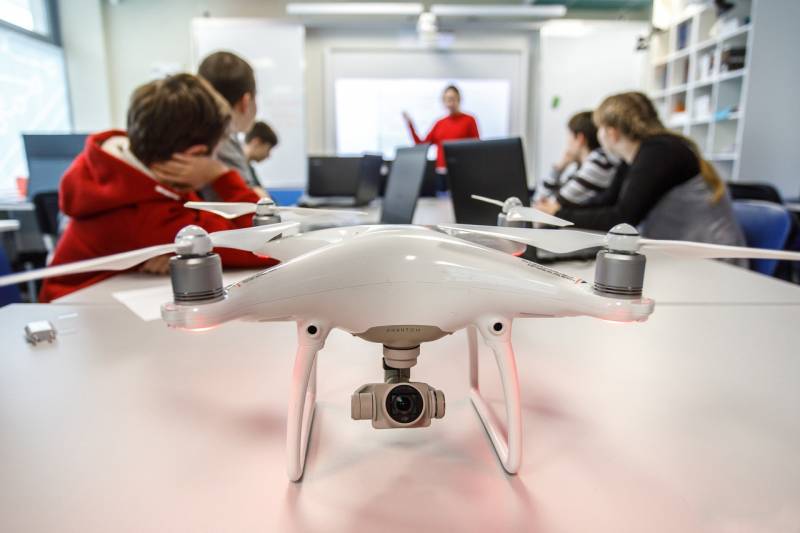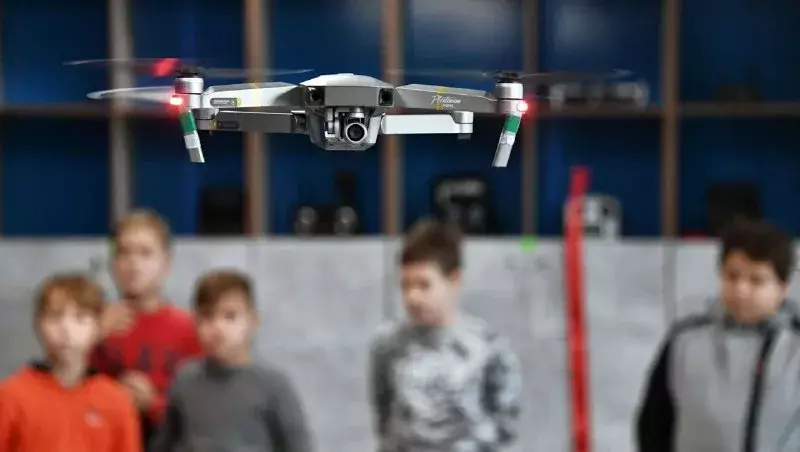Where and with whom will school drones fly?

Source: stylishbag.ru
UAV in every school
UAVs have become a real headache for modern Russia. The special operation revealed serious problems in planning the development of the industry and elementary design. Everything is in the worst traditions - at the state level there was no clear policy in the field of UAV development, which is why private companies had no interest in the issue.
When interest arose from everyone in a row, it turned out that most of the components are not manufactured in Russia. Difficulties with brushless motors, control electronics and surveillance systems.
It is no coincidence that in June 2023 the Government adopted an ambitious “Strategy for the Development of Unmanned aviation Russian Federation for the period up to 2030 and for the future up to 2035”. The year 2030 for Russia should probably become the most fateful, if not for the whole century, then for sure in twenty or thirty years. By this date, the country should have a world-class aviation industry, a sufficient electronics industry, and a five-fold increase in satellite constellation. And this is only part of the ambitious planning.
In addition to the purely technical aspects of the "UAV Program", the Strategy plans to "create a system of continuous education, training and provision of qualified personnel for the unmanned aviation industry." It seems logical that the initiative of the Ministry of Education to organize a pilot training program for students in grades 10-11 drones.
A separate subject for this, of course, is not singled out - several hours are ordered from the course of initial military training, which, in turn, is integrated into the OBZH. The CWP theme will return to schools from September 1, 2023, and with it the program for “drone pilots”.
Basic military training is a solid set of modules: Tactical Training, Fire Training, Fundamentals of Technical Training and Communications, Engineering Training, Radiation, Chemical and Biological Protection, First Aid, General Military Regulations , "Drill training" and "Fundamentals of the security of military service."
Drone pilot skills and abilities are included in the Fundamentals of Technical Training and Communication course. Nothing but positive feedback story cannot call. There are several reasons.
Firstly, any technical component of education invariably attracts the attention of schoolchildren. With motivation in the lessons, it’s completely sour, and drones should move the situation off the ground, at least in the course of life safety. The drone is becoming as familiar to the battlefield as the Kalashnikov assault rifle, so future recruits should have good UAV skills.
If you believe the working program of the course, then high school students will work out not only takeoff and landing, but also more complex elements. The program includes reconnaissance and combat use (obviously, dropping ammunition and FPV kamikaze attacks), algorithms and signs of using electronic warfare systems, as well as piloting in various operating modes.
Secondly, a close acquaintance with UAVs in the classroom will allow future engineers and professional drone operators to decide on a profession. The Strategy for the Development of Unmanned Aviation was mentioned above, which is likely to face a shortage of personnel. The school curriculum should at least partially satisfy him.
There are decent hopes for progress in education, but there are also many difficulties. Many of them are critical.
What, where and when?
For conservative school life, the appearance of a course for UAV operators is hardly less resonant than the roll of thunder overhead. There are many complexities. The main question is where to find specialists who can convey to schoolchildren the wisdom of piloting and operating drones?
There are about 70 thousand schools in Russia, although not all of them have senior classes, but all of them have a teacher of life safety in the state. It will not be possible to promptly retrain teachers-organizers of the basics of life safety (this is the name of the position) - teachers need many hours of theoretical and practical training. In the worst case, school administrators quickly organize correspondence courses with a completely predictable result.
A possible scenario could be the transfer of the Basics of Technical Training and Communications module, which, we recall, implies the training of UAV operators, to traditional military training. Usually the event takes place in the nearest military units, where, under the strict guidance of sergeants and officers, future recruits get acquainted with the army way of life. Here it is easier to find professional drone operators to transfer experience. But not everywhere near the school you can find a military unit - the military is not deployed in every city, not to mention the villages.
The second logical issue is the technical equipment of schools. Each of the 70 thousand schools needs to find at least one drone for practical training. However, he will be safely killed already in the second week - either hotheads from 10 "B", or the life safety teacher himself during the next training session. Therefore, the school needs a whole staff of drones, ranging from the simplest sizes in the palm of your hand to machines of the DJI Matrix level and FVP products. This, of course, is the most “fat” option, but who stops you from fantasizing?
In addition, the school will need a specialist who can repair wounded UAVs. Not to mention the gigantic amounts of funding and the difficulties of purchasing drones in China.
It is worth providing answers to fair questions from the public and caring critics. For example, at the front, the fighters do not have enough DJI, but at your school, why is there a drone in every class, and more than one? Here it is just right for the headmaster to take special courses to answer such questions.

Drones need open air, which means that schools will have to provide separate areas for training. Financing also requires the purchase of special software for computer simulators.
In addition, it is highly desirable to organize an acquaintance with the technical base of the UAV and even the basics of design. It is not easy to bring a drone that has gone haywire to its senses - in its simplicity it is far from being a Kalashnikov assault rifle. We need stands, specialists, components, separate areas and money, money, money ...
The main obstacle to the implementation of the course is seen as a ban on drone flights, introduced immediately in 60 regions of the countries. How, for example, in a Moscow school to master the "reconnaissance and combat use" of UAVs? Obviously, only on the fingers. Officials from school education clearly did not agree on the initiative with the prosecutor's office and the Federal Air Transport Agency.
Without taking into account such subtleties, a good deed risks turning into another profanity. At best, they will be worthy of watching educational films and training on simulators. This will finally discourage the desire of schoolchildren to delve into the problem and develop.
It is not surprising that in the end we come to the truth as old as the world - an idea is good only when its real implementation is provided. The initiative of the Ministry of Education still has many more questions than positive emotions.
Information